Electron flow in hydrogenotrophic methanogens under nickel limitation
- PMID: 40604290
- PMCID: PMC12350162
- DOI: 10.1038/s41586-025-09229-y
Electron flow in hydrogenotrophic methanogens under nickel limitation
Abstract
Methanogenic archaea are the main producers of the potent greenhouse gas methane1,2. In the methanogenic pathway from CO2 and H2 studied under laboratory conditions, low-potential electrons for CO2 reduction are generated by a flavin-based electron-bifurcation reaction catalysed by heterodisulfide reductase (Hdr) complexed with the associated [NiFe]-hydrogenase (Mvh)3-5. F420-reducing [NiFe]-hydrogenase (Frh) provides electrons to the methanogenic pathway through the electron carrier F420 (ref. 6). Here we report that under strictly nickel-limited conditions, in which the nickel concentration is similar to those often observed in natural habitats7-11, the production of both [NiFe]-hydrogenases in Methanothermobacter marburgensis is strongly downregulated. The Frh reaction is substituted by a coupled reaction with [Fe]-hydrogenase (Hmd), and the role of Mvh is taken over by F420-dependent electron-donating proteins (Elp). Thus, Hmd provides all electrons for the reducing metabolism under these nickel-limited conditions. Biochemical and structural characterization of Elp-Hdr complexes confirms the electronic interaction between Elp and Hdr. The conservation of the genes encoding Elp and Hmd in CO2-reducing hydrogenotrophic methanogens suggests that the Hmd system is an alternative pathway for electron flow in CO2-reducing hydrogenotrophic methanogens under nickel-limited conditions.
© 2025. The Author(s).
Conflict of interest statement
Competing interests: The authors declare no competing interests.
Figures

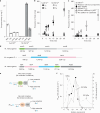


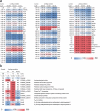

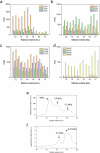
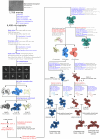
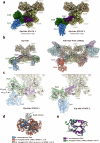

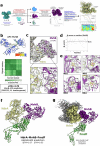
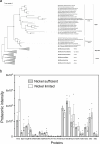
Similar articles
-
Isolation of an H2-dependent electron-bifurcating CO2-reducing megacomplex with MvhB polyferredoxin from Methanothermobacter marburgensis.FEBS J. 2024 Jun;291(11):2449-2460. doi: 10.1111/febs.17115. Epub 2024 Mar 12. FEBS J. 2024. PMID: 38468562
-
Relevance of extracellular electron uptake mechanisms for electromethanogenesis applications.Biotechnol Adv. 2024 Jul-Aug;73:108369. doi: 10.1016/j.biotechadv.2024.108369. Epub 2024 Apr 27. Biotechnol Adv. 2024. PMID: 38685440 Review.
-
Effects of CO2 and H2 limitations on Methanococcus maripaludis.Microbiol Spectr. 2025 Aug 6:e0035925. doi: 10.1128/spectrum.00359-25. Online ahead of print. Microbiol Spectr. 2025. PMID: 40767481
-
Quantitative analysis of amino acid excretion by Methanothermobacter marburgensis under N2-fixing conditions.Sci Rep. 2025 Jan 30;15(1):3755. doi: 10.1038/s41598-025-87686-1. Sci Rep. 2025. PMID: 39885323 Free PMC article.
-
Hydrogenases from methanogenic archaea, nickel, a novel cofactor, and H2 storage.Annu Rev Biochem. 2010;79:507-36. doi: 10.1146/annurev.biochem.030508.152103. Annu Rev Biochem. 2010. PMID: 20235826 Review.
References
-
- Conrad, R. The global methane cycle: recent advances in understanding the microbial processes involved. Environ. Microbiol. Rep.1, 285–292 (2009). - PubMed
-
- Thauer, R. K., Kaster, A. K., Seedorf, H., Buckel, W. & Hedderich, R. Methanogenic archaea: ecologically relevant differences in energy conservation. Nat. Rev. Microbiol.6, 579–591 (2008). - PubMed
-
- Setzke, E., Hedderich, R., Heiden, S. & Thauer, R. K. H2: heterodisulfide oxidoreductase complex from Methanobacterium thermoautotrophicum: composition and properties. Eur. J. Biochem.220, 139–148 (1994). - PubMed
-
- Wagner, T., Koch, J., Ermler, U. & Shima, S. Methanogenic heterodisulfide reductase (HdrABC-MvhAGD) uses two noncubane [4Fe-4S] clusters for reduction. Science357, 699–702 (2017). - PubMed
MeSH terms
Substances
LinkOut - more resources
Full Text Sources

